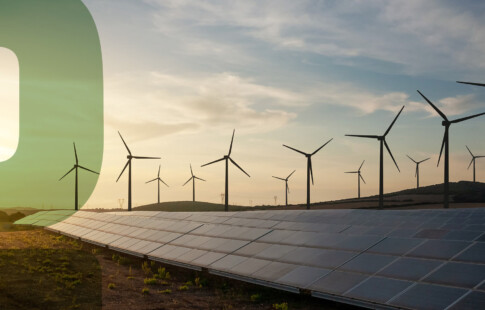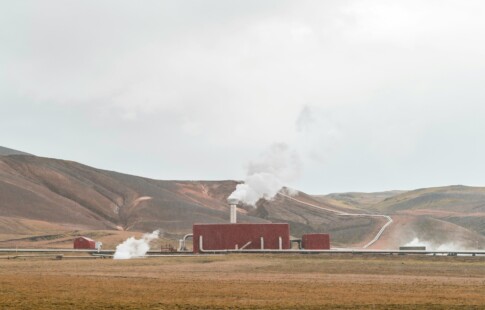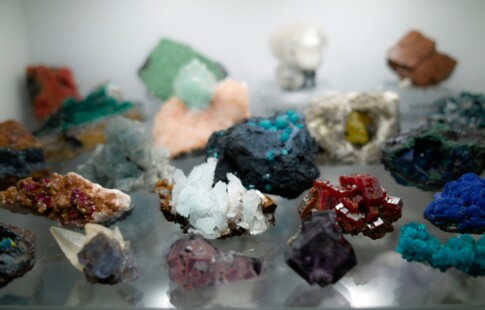
Is an NCM Battery the Best Choice for EVS?
We are reader-supported. When you buy through links on our site, we may earn affiliate commission.
As sustainable transportation becomes more popular and demand for batteries increases, EV manufacturers must determine whether an NCM battery is the best choice for their products. They must consider its manufacturing process, benefits, and environmental impacts to understand if they should stick with it or switch to something else.
What Are LFP and NCM Batteries?
People often compare Lithium iron phosphate (LFP) batteries to lithium nickel manganese cobalt oxide (NCM) batteries because of their similar benefits and uses. Although they use similar materials, their minerals affect the end product much differently. They can power a range of devices, but one of their biggest uses is in vehicles.
Electric vehicle (EV) manufacturers use NCM batteries a majority of the time because they’re lighter and often more inexpensive than LFP versions. They also have a few more benefits, which makes them appealing choices.
How Does an NCM Battery Compare to an LFP?
While the two battery types stack up pretty evenly against each other, there are some instances where one clearly outperforms the other. EV manufacturers consider each of these things when deciding which to use.
There are a few main factors to compare them:
- Life span: While the life span of an LFP battery is around 3000 cycles, an NCM is only 1000 cycles – it lasts about one-third as long as the other.
- Storage: NCMs have much better energy storage.
- Temperature resistance: An NCM battery can handle the cold better, whereas an LFP is protected against thermal runaway because it can resist high heat. The difference may seem small, but it poses a potential fire hazard.
- Performance: The performance of the two batteries is relatively similar, although variables like temperature and age can have significant impacts.
- Initial cost: The initial cost of an NCM battery is typically lower, although recent global events have caused fluctuating prices.
- Lifetime value: Many people assume the lifetime value of NCM batteries is lower because they don’t last as long, but it’s debatable.
NCM batteries can withstand cold better and store more energy, but LFP versions last longer and can handle high heat. While these things may not seem comparable, it’s a give-and-take situation. As of 2023, most EV manufacturers use NCMs because they have the advantage. Still, while both types are reasonably well-balanced in their technical specifications, there’s more to it than that.
Does the Mining Process Matter?
Mining is arguably the most important part of the process. Mineral extraction is necessary as of 2023 to create new batteries since there aren’t really any large-scale, reliable recycling methods. In recent years, the logistics of the process have grown complicated.
The price of minerals is steeply rising in response to various global factors. Lithium’s cost increased a staggering 738% from 2021 to 2022, while the cost of nickel and cobalt rose 96% and 156%, respectively, in the same time frame. Although everything has become more expensive in general, EV manufacturers may soon be priced out of nickel, manganese, and cobalt. They may be convinced to switch just by the price.
The mining process also affects people in the industry. For example, the people in The Democratic Republic of the Congo mine over 65% of the world’s cobalt supply, using more than 40,000 children in the process. There’s a general global agreement that forced child labor and poor working conditions are bad, so it doesn’t look good for EV manufacturers to use products made with it.

Does the Manufacturing Process Matter?
An NCM battery’s manufacturing process matters because it has the most significant impact. Since nearly 95% of its energy consumption comes from its precursor production of cobalt and nickel, updating the methods and using secondary metals could significantly reduce its adverse environmental effects.
While many companies that produce EVs don’t deal directly with battery production, it still plays a role. Sustainability is one of the largest draws of their products, so it makes sense that they would find an eco-friendly manufacturing process appealing.
How Do Their Environmental Impacts Compare?
Both types impact the environment before they ever hit the road. In general, the lithium mining process releases toxins into local ecosystems that can harm or even kill nearby animals. That being said, while producing an NCM battery consumes almost the same amount of energy as an LFP version, the LFP still has a worse impact because it creates environmental waste and is less recyclable. Although many companies are trying to improve it, it’s not currently as good.
Once it’s in a vehicle, it typically lasts longer than the NCM version. Even though this sounds good because longevity is more sustainable, researchers found it depletes resources and produces emissions at much higher rates from the beginning to the end of its lifecycle. Nothing is perfect, but an NCM generally outperforms it in sustainability from the mining process to use.
Why are EV Manufacturers Considering Switching?
Many EV manufacturers are considering switching from an NCM battery to an LFP because of its affordability and benefits. The cost of minerals in all EV batteries has steadily risen in recent years, but some events have caused steep increases. For example, the war in Ukraine has caused instability in the nickel market because it affected mineral production and the supply chain.
Most countries cut Russia off after its move to overtake Ukraine, which particularly affected nickel production. See, Russia produced over one-fifth of the world’s supply of Class 1 nickel – the only type that batteries can use. With such a sudden change, many EV manufacturers are looking for alternatives to adapt to the different market.
In addition, more countries are looking for domestic sources of minerals, so they’re shifting away from the NCM battery and adopting the LFP. It’s easier to get the minerals for it because they’re more widespread. With the recent improvements the LFP version has made in recycling and energy density, it’s becoming clear that it may overtake the market.
How Is the Market Changing?
As long as batteries need replacements faster than vehicles, the need for them will always be higher. Demand for EV batteries in the United States increased by about 80% in 2022, even though demand for the vehicles only grew by 55% in the same year. Manufacturers in the industry must respond with greater battery production, but they need to look to alternatives to make up for rising expenses and reduced availability.
Although the NCM battery is the go-to choice as of 2023 for most EV manufacturers, the shares of LFPs increased from 17% in 2021 to 31% in 2022, meaning it’s starting to slowly overtake the market. No one expects it to replace NCMs any time soon, but it definitely has the potential to.
Should EV Manufacturers Switch to LFP Batteries?
As nickel, lithium, and cobalt become harder to get ahold of, companies are finding alternative solutions. Although some places are adopting new methods for mineral collection and refinement, they produce greenhouse gas emissions and hazardous waste at such a significant rate that they could offset the environmental benefits of EV use.
The solution is to improve the recycling process and reduce the emissions from precursor production, which could significantly improve the positive environmental impacts NCM batteries have. That being said, companies are looking to save money and rapidly adapt to a sudden change in the market, so they may focus on something other than improving the process.
Chinese manufacturers are already making the switch to LFP batteries in response to increasing demand. While it does outperform NCMs in some respects, it produces more greenhouse gas emissions and isn’t nearly as sustainable. The technical benefits of switching may not be enough to offset the cost of a more negative environmental impact. While many people don’t drive EVs just for their eco-friendly nature, manufacturers should consider it in the overall value of switching.
Is an NCM Battery the Best Choice?
While an NCM battery impacts the climate and environment better than an LFP, making the switch is logical because it’s potentially more affordable and manageable. While it seems like the best choice, EV manufacturers have to consider the cost of doing business and how that translates to their customers. They ultimately make the final decision.
Share on
Like what you read? Join other Environment.co readers!
Get the latest updates on our planet by subscribing to the Environment.co newsletter!
About the author

Jane Marsh
Starting from an early age, Jane Marsh loved all animals and became a budding environmentalist. Now, Jane works as the Editor-in-Chief of Environment.co where she covers topics related to climate policy, renewable energy, the food industry, and more.





